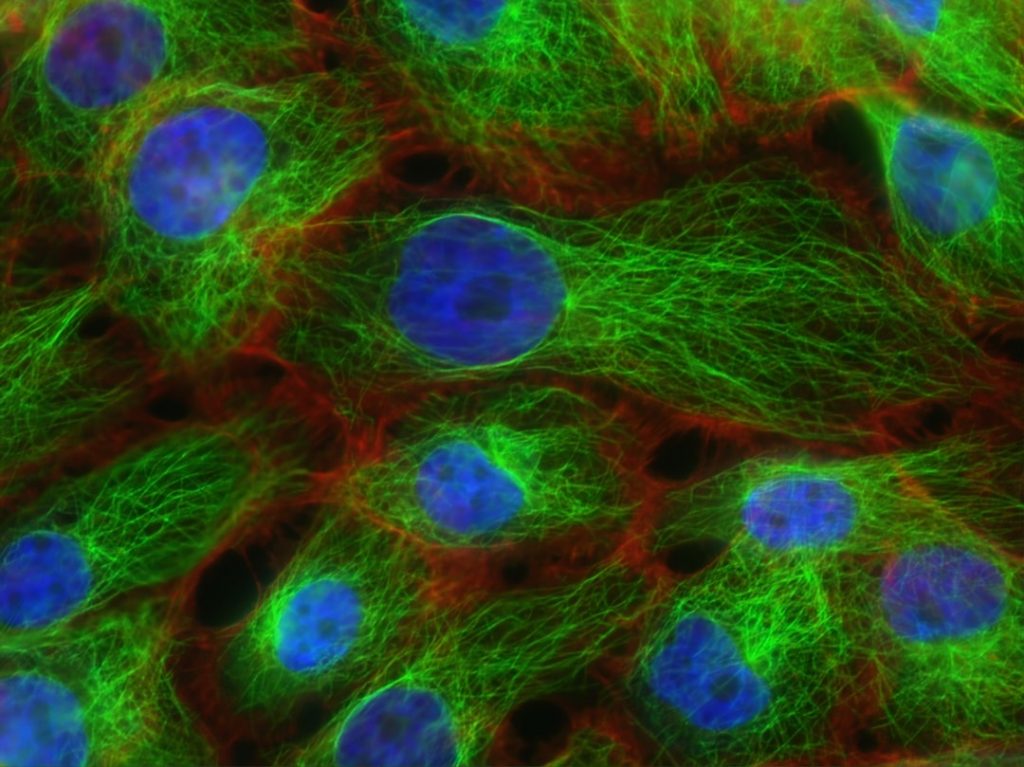Analytical chemistry is a branch of chemistry that focuses on the identification, quantification, and characterization of chemical compounds and elements. It plays a crucial role in various fields such as pharmaceuticals, environmental monitoring, forensic science, food and beverage industry, and many more. Analytical chemists use a wide range of methods and techniques to analyze samples and provide accurate and reliable results.
Analytical chemistry is essential in many industries as it helps ensure the quality and safety of products. For example, in the pharmaceutical industry, analytical chemistry is used to determine the purity and potency of drugs. In environmental monitoring, it is used to detect and quantify pollutants in air, water, and soil. In forensic science, it is used to analyze evidence and identify substances found at crime scenes. The importance of analytical chemistry cannot be overstated as it provides valuable information that helps make informed decisions in various fields.
Summary
- Analytical chemistry is the study of chemical compounds and their properties.
- Spectroscopy and chromatography are two common analytical methods used to identify and quantify substances.
- Quality control is essential in analytical chemistry to ensure accurate and reliable results.
- Proper sampling and sample preparation techniques are crucial for obtaining representative results.
- Quantitative analysis measures the concentration or amount of a substance, while qualitative analysis identifies unknown substances and components.
Understanding Analytical Methods and Techniques
There are several analytical methods and techniques used in analytical chemistry. Spectroscopy is one such technique that involves the interaction of electromagnetic radiation with matter. It can be used to determine the composition, structure, and concentration of substances. Different types of spectroscopy include UV-Vis spectroscopy, infrared spectroscopy, nuclear magnetic resonance (NMR) spectroscopy, and mass spectrometry.
Chromatography is another widely used technique in analytical chemistry. It involves the separation of components in a mixture based on their different affinities for a stationary phase and a mobile phase. Common types of chromatography include gas chromatography (GC), liquid chromatography (LC), and high-performance liquid chromatography (HPLC).
Mass spectrometry is a technique that measures the mass-to-charge ratio of ions to identify and quantify compounds. It is often coupled with chromatography to provide more detailed information about the composition of a sample.
Electrochemistry is another important analytical technique that involves the study of chemical reactions that involve the transfer of electrons. It is used to determine the concentration of analytes in a sample and to study redox reactions.
Other techniques used in analytical chemistry include titration, gravimetric analysis, and atomic absorption spectroscopy. Each technique has its advantages and limitations, and the choice of technique depends on the nature of the sample and the information required.
The Importance of Quality Control in Analytical Chemistry
Quality control is a critical aspect of analytical chemistry as it ensures the accuracy and precision of analytical results. Accuracy refers to how close the measured value is to the true value, while precision refers to how close repeated measurements are to each other. Quality control measures are implemented to minimize errors and ensure reliable results.
Calibration and validation are important steps in quality control. Calibration involves comparing the measurement obtained from an instrument or method with a known standard to ensure accuracy. Validation, on the other hand, involves evaluating the performance characteristics of an analytical method to ensure its suitability for a specific application.
Quality assurance (QA) and quality control (QC) are two important components of quality control in analytical chemistry. QA involves establishing and maintaining a system to ensure that analytical results meet specified requirements. QC, on the other hand, involves monitoring and controlling the quality of analytical results by implementing procedures such as internal quality control checks, external quality control programs, and proficiency testing.
Sampling and Sample Preparation in Analytical Chemistry
| Sampling and Sample Preparation in Analytical Chemistry | Definition | Importance |
|---|---|---|
| Sampling | The process of selecting a representative portion of a material or substance for analysis. | Ensures that the results obtained from the analysis are accurate and reliable. |
| Sample Preparation | The process of converting a sample into a form that can be analyzed. | Improves the accuracy and precision of the analysis by removing interferences and concentrating the analyte. |
| Sampling Error | The difference between the true value of a parameter and the value obtained from the sample. | Can be reduced by using appropriate sampling techniques and increasing the sample size. |
| Sample Homogeneity | The degree to which a sample is uniform in composition. | Affects the accuracy and precision of the analysis and can be improved by proper sample preparation techniques. |
| Sample Preservation | The process of preventing changes in the sample during storage and transportation. | Ensures that the sample remains representative of the original material and prevents degradation of the analyte. |
Sampling is a critical step in analytical chemistry as it determines the representativeness of a sample. A representative sample is one that accurately reflects the composition of the entire population or batch being analyzed. Various factors such as sample size, sampling method, and sampling location can affect the representativeness of a sample.
Sample preparation is another important step in analytical chemistry as it involves converting a sample into a form suitable for analysis. This may involve processes such as grinding, homogenization, extraction, filtration, and concentration. Proper sample preparation is crucial to ensure accurate and reliable results.
Tips and tricks for successful sample preparation include using appropriate equipment and techniques, following established protocols, minimizing contamination, and ensuring proper storage and preservation of samples. It is also important to consider the nature of the sample and the analytical technique being used when selecting a sample preparation method.
Quantitative Analysis
Quantitative analysis involves determining the concentration or amount of a specific analyte in a sample. It is an important aspect of analytical chemistry as it provides information about the quantity of a substance present. Common analytical techniques used for quantitative analysis include titration, spectrophotometry, gravimetric analysis, and chromatography.
Titration is a technique that involves the reaction between a known volume of a solution with a known concentration (titrant) and a solution containing the analyte. The volume of titrant required to reach the equivalence point is used to determine the concentration of the analyte.
Spectrophotometry involves measuring the absorption or transmission of light by a sample at specific wavelengths. This can be used to determine the concentration of an analyte by comparing its absorbance or transmittance with a calibration curve.
Gravimetric analysis involves determining the mass of an analyte or a compound formed from the analyte. This can be used to calculate the concentration of the analyte in the original sample.
Chromatography is another commonly used technique for quantitative analysis. It involves separating components in a mixture and measuring their relative amounts. The area under the peak in a chromatogram can be used to determine the concentration of an analyte.
Qualitative Analysis

Qualitative analysis involves identifying unknown substances or components in a sample. It is an important aspect of analytical chemistry as it provides information about the identity and composition of a substance. Common analytical techniques used for qualitative analysis include spectroscopy, chromatography, and mass spectrometry.
Spectroscopy can be used to identify unknown substances by comparing their spectra with reference spectra. Each substance has a unique spectrum that can be used to determine its identity.
Chromatography can be used to separate and identify components in a mixture. By comparing the retention times or retention factors of unknown components with those of known standards, their identity can be determined.
Mass spectrometry is a powerful technique for qualitative analysis as it provides information about the mass-to-charge ratio of ions. By comparing the mass spectra of unknown substances with reference spectra, their identity can be determined.
Analytical Instrumentation
Analytical chemistry relies heavily on various types of instrumentation to analyze samples and obtain accurate and reliable results. Some commonly used analytical instruments include microscopes, spectrometers, chromatographs, and mass spectrometers.
Microscopes are used to visualize and analyze samples at the microscopic level. They can provide information about the morphology, structure, and composition of samples.
Spectrometers are used to measure the interaction of electromagnetic radiation with matter. They can provide information about the composition, structure, and concentration of substances. Different types of spectrometers include UV-Vis spectrometers, infrared spectrometers, NMR spectrometers, and mass spectrometers.
Chromatographs are used to separate components in a mixture based on their different affinities for a stationary phase and a mobile phase. They can provide information about the composition and concentration of components in a sample.
Mass spectrometers are used to measure the mass-to-charge ratio of ions to identify and quantify compounds. They can provide detailed information about the composition of a sample.
Other analytical instruments used in analytical chemistry include atomic absorption spectrometers, gas chromatographs, liquid chromatographs, and high-performance liquid chromatographs.
Analytical Chemistry in Industry
Analytical chemistry plays a crucial role in various industries as it helps ensure the quality and safety of products. In the pharmaceutical industry, analytical chemistry is used to determine the purity and potency of drugs. It is also used to analyze raw materials, intermediates, and finished products to ensure compliance with regulatory requirements.
In the food and beverage industry, analytical chemistry is used to analyze food samples for contaminants, additives, and nutritional content. It is also used to monitor the quality and authenticity of food products.
In the environmental industry, analytical chemistry is used to monitor pollutants and contaminants in air, water, and soil. It is used to assess the impact of human activities on the environment and to develop strategies for pollution control and remediation.
In the forensic science industry, analytical chemistry is used to analyze evidence collected at crime scenes. It is used to identify substances such as drugs, explosives, and toxins, and to link suspects to crime scenes.
Environmental Analytical Chemistry
Environmental analytical chemistry focuses on monitoring pollutants and contaminants in air, water, and soil. It plays a crucial role in assessing the impact of human activities on the environment and developing strategies for pollution control and remediation.
Analytical techniques used in environmental analysis include spectroscopy, chromatography, mass spectrometry, and electrochemistry. These techniques can be used to detect and quantify a wide range of pollutants such as heavy metals, organic compounds, pesticides, and volatile organic compounds.
Environmental analytical chemistry also involves sample collection and preparation. Samples are collected from various environmental matrices such as air, water, soil, sediments, and biota. Sample preparation techniques such as extraction, filtration, and concentration are then used to isolate and concentrate the analytes of interest.
Future Directions in Analytical Chemistry
Analytical chemistry is a rapidly evolving field with new technologies and techniques constantly being developed. Some emerging technologies in analytical chemistry include nanotechnology, biosensors, microfluidics, and imaging techniques.
Nanotechnology has the potential to revolutionize analytical chemistry by providing new tools and materials for analysis. Nanomaterials can be used as sensors, catalysts, and separation media, among other applications.
Biosensors are analytical devices that use biological components such as enzymes, antibodies, or DNA to detect and quantify analytes. They have the potential to provide rapid and sensitive analysis in various fields such as healthcare, food safety, and environmental monitoring.
Microfluidics is a field that involves the manipulation of small volumes of fluids in microchannels. It has the potential to miniaturize analytical systems and improve their performance in terms of speed, sensitivity, and portability.
Imaging techniques such as microscopy and spectroscopy are also advancing rapidly. They can provide detailed information about the composition, structure, and dynamics of samples at the microscopic level.
Despite the advancements in analytical chemistry, there are still challenges facing the field. These include the need for improved sensitivity, selectivity, and speed of analysis. There is also a need for more robust and reliable analytical methods that can be easily implemented in various settings.
In terms of future applications, analytical chemistry will continue to play a crucial role in various fields such as healthcare, environmental monitoring, food safety, and forensic science. It will also contribute to the development of new materials, drugs, and technologies.
Analytical chemistry is a diverse and important field that plays a crucial role in various industries and scientific disciplines. It involves the use of various methods and techniques to analyze samples and provide accurate and reliable results. Quality control is an essential aspect of analytical chemistry as it ensures the accuracy and precision of analytical results. Sampling and sample preparation are critical steps in analytical chemistry as they determine the representativeness of a sample and its suitability for analysis. Quantitative analysis involves determining the concentration or amount of a specific analyte in a sample, while qualitative analysis involves identifying unknown substances or components. Analytical chemistry relies heavily on various types of instrumentation to analyze samples and obtain accurate and reliable results. It is used in various industries such as pharmaceuticals, environmental monitoring, food and beverage, and forensic science. The future of analytical chemistry holds great promise with emerging technologies and techniques that will further advance the field.
FAQs
What is Analytical Chemistry?
Analytical Chemistry is a branch of chemistry that deals with the identification, separation, and quantification of chemical compounds in a given sample.
What are the applications of Analytical Chemistry?
Analytical Chemistry has a wide range of applications in various fields such as pharmaceuticals, food and beverage industry, environmental monitoring, forensic science, and many more.
What are the techniques used in Analytical Chemistry?
There are various techniques used in Analytical Chemistry such as chromatography, spectroscopy, electrochemistry, mass spectrometry, and many more.
What is Chromatography?
Chromatography is a technique used in Analytical Chemistry to separate and identify the components of a mixture based on their physical and chemical properties.
What is Spectroscopy?
Spectroscopy is a technique used in Analytical Chemistry to study the interaction between matter and electromagnetic radiation.
What is Electrochemistry?
Electrochemistry is a branch of Analytical Chemistry that deals with the study of chemical reactions that involve the transfer of electrons.
What is Mass Spectrometry?
Mass Spectrometry is a technique used in Analytical Chemistry to identify and quantify the chemical compounds in a sample based on their mass-to-charge ratio.


